The New Jersey Cemetery Trapped in the 19th Century
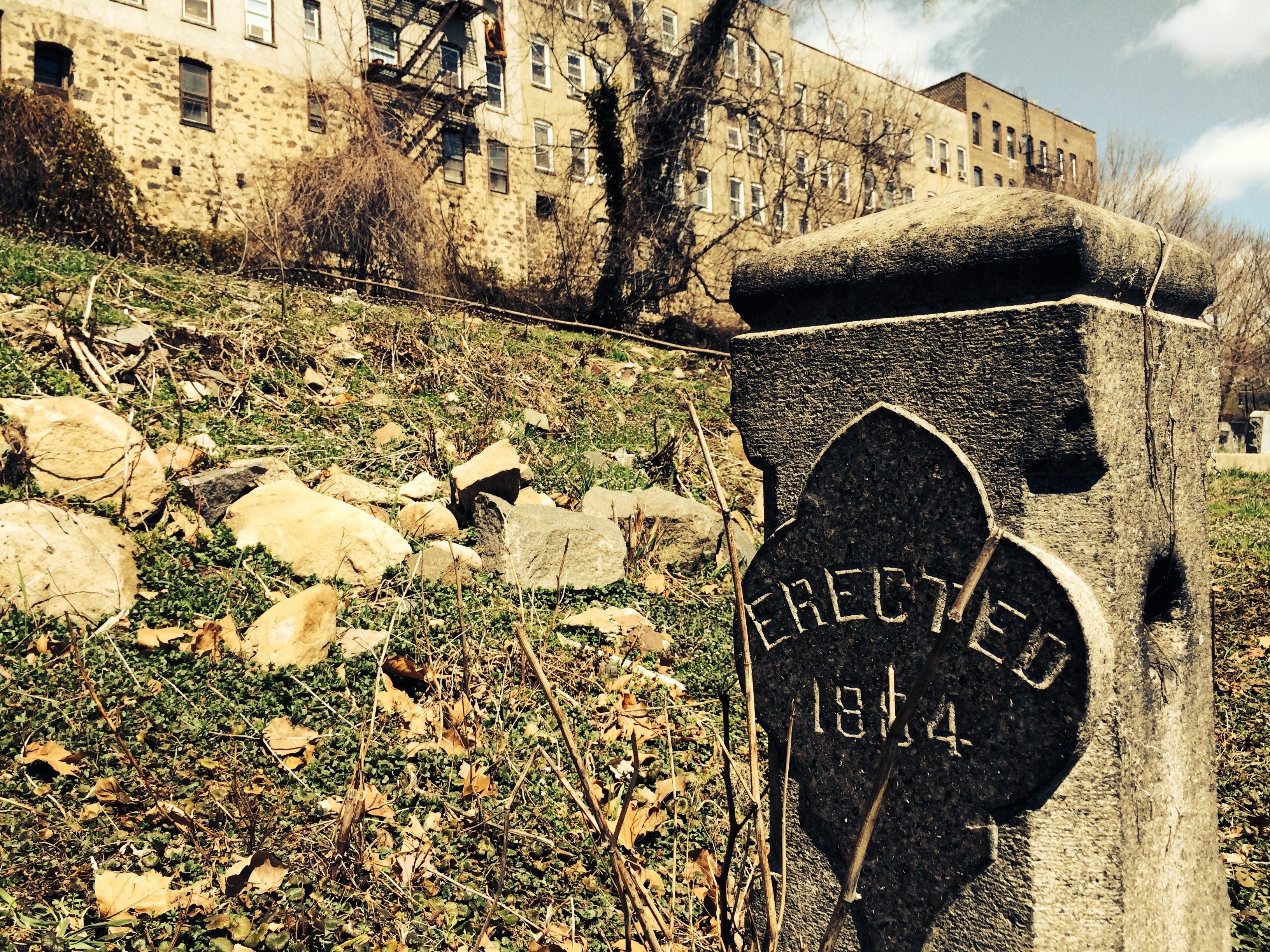
At one point, all these rocks were covered by weeds. (All photos by Luke Spencer.)
In 2008, a retired woman named Eileen Markenstein and a small group of volunteers decided to clean up Jersey City’s cemetery. Named the Historic Jersey City and Harsimus Cemetery, it was a storied gravesite: incorporated in 1831 and privately owned by the plot holders, this is the oldest cemetery in New Jersey. By 2007, the last Board of Trustees president died, and with no more space for new lots, and no money to pay for upkeep, the venerable old cemetery closed its gates. Nature rapidly began to reclaim the graveyard.
Their first job was to start uncovering tombstones long hidden from view by weeds, lying at right angles half buried in the earth. It was a chaotic scene: Homeless people were living on the grounds in tents. The old caretakers’ cottage, dating back to 1831, was in a sorry state. Vandals had written all over the walls and the floor was littered with hypodermic needles.
On the floor of a wardrobe in the cottage, Markenstein found a metal canister. Inside was the original map of the cemetery from 1831. They had been clearing away the dense undergrowth plot by plot, lane by lane, but the map showed that the graveyard continued up the hill to the west, where now there was only dense forest.
One day, clearing undergrowth, a volunteer stumbled upon a stone step. Like a modern Cair Paravel from Narnia, the stone staircase led up the hill and ended in an old rusted iron door set into the hillside. Breaking open the old door and stepping inside out of the clear Jersey sunlight, they found an antechamber. It had been undisturbed for over 100 years. Torchlight showed a series of tunnels disappearing into the hillside, snaking left and right.
The week after this discovery, Markenstein went to see her doctor complaining of crushing chest pains. She was rushed to hospital where, for 21 days, she underwent tests but no one could find out what was wrong with her. Finally, a doctor asked her if she’d been anywhere unusual recently. Well, she replied, as it happens I have. No wonder the medical staff struggled to diagnose Markenstein—she was suffering from an ailment more commonly found during the 19th century. Markenstein had pleurisy.
Remarkably, what they found is still there, buried away in the Jersey hillside virtually unknown and undiscovered. I went to explore it for Atlas Obscura.
The cemetery is situated at the outskirts of Jersey City, the second largest city in the state, although its population actually peaked in the 1930s. Now boxed in between Newark Avenue, the New Jersey turnpike and the railroad, the cemetery had once been commanded the highest views of the Hudson River. The rolling hills had once been home to the Lenape tribe of Native Americans, until Dutch farmers settled the land. Such was the strategic importance of the high terrain that it was the historic site of several battles during the War for Independence.
In 1780, the French General Marquis de Lafayette camped here with 4,000 troops at the request of General Washington, from where he fought the British. It remained a key military stronghold during the War of 1812.
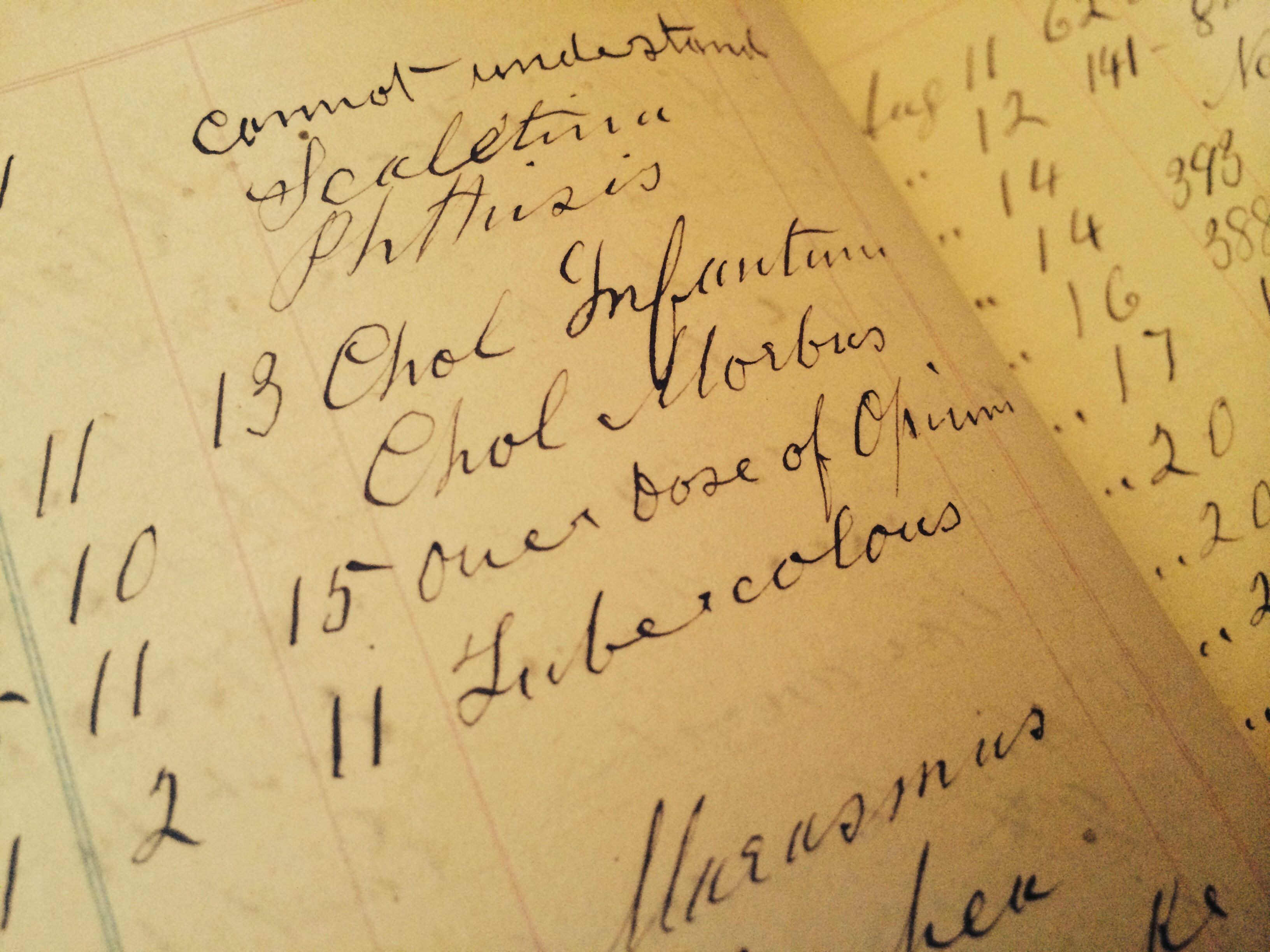
A log of who’s buried, and how they died.
As the population of Jersey City expanded in the 1820s it became apparent that the old graveyards attached to churchyards were becoming increasingly ill-equipped to deal with the growing numbers of deceased. A cholera epidemic in the early 1830s saw the city create a larger municipal cemetery on the outskirts of town, and 5 acres of the old military base became the Jersey City and Harsimus Cemetery. Privately owned, and run by a board of trustees, the cemetery would be funded by the selling of plots in what was to be one of America’s very first landscaped garden-style graveyards. Sculpted lawns, flower beds and trees heavy with blossom would be the backdrop for the grand mausoleums and decorative tombstones that would be mimicked by Green-Wood in Brooklyn (founded seven years later in 1838) and Woodlawn in the Bronx (1863).
At first, the Jersey City cemetery was a runaway success. Many of the well-heeled members of Jersey society bought plots, amongst them William Colgate, founder of Colgate-Palmolive; the President of the Board was David C. Colden, son of the Mayor of New York. But while Green-wood and Woodlawn have thrived, becoming designated as National Historic Landmarks, Jersey City fell by the wayside. In 2007 the last active member of the old Board passed away. Worse still, there were rumors of financial mismanagement. The Jersey Journal newspaper in 2008 wrote a report asking where over $100,000 of the cemetery’s maintenance fund had gone.
With no money coming in, the gates were locked and the cemetery was forgotten.
For Markenstein, the mission to resurrect the cemetery is personal. She has four generations of her family buried there. As we met on a spring afternoon, she proudly showed off the huge improvements made by her and her team in the past seven years. Large parts of the cemetery now resemble the smooth greens of a golf course, but others are still in a terrible state of disrepair.
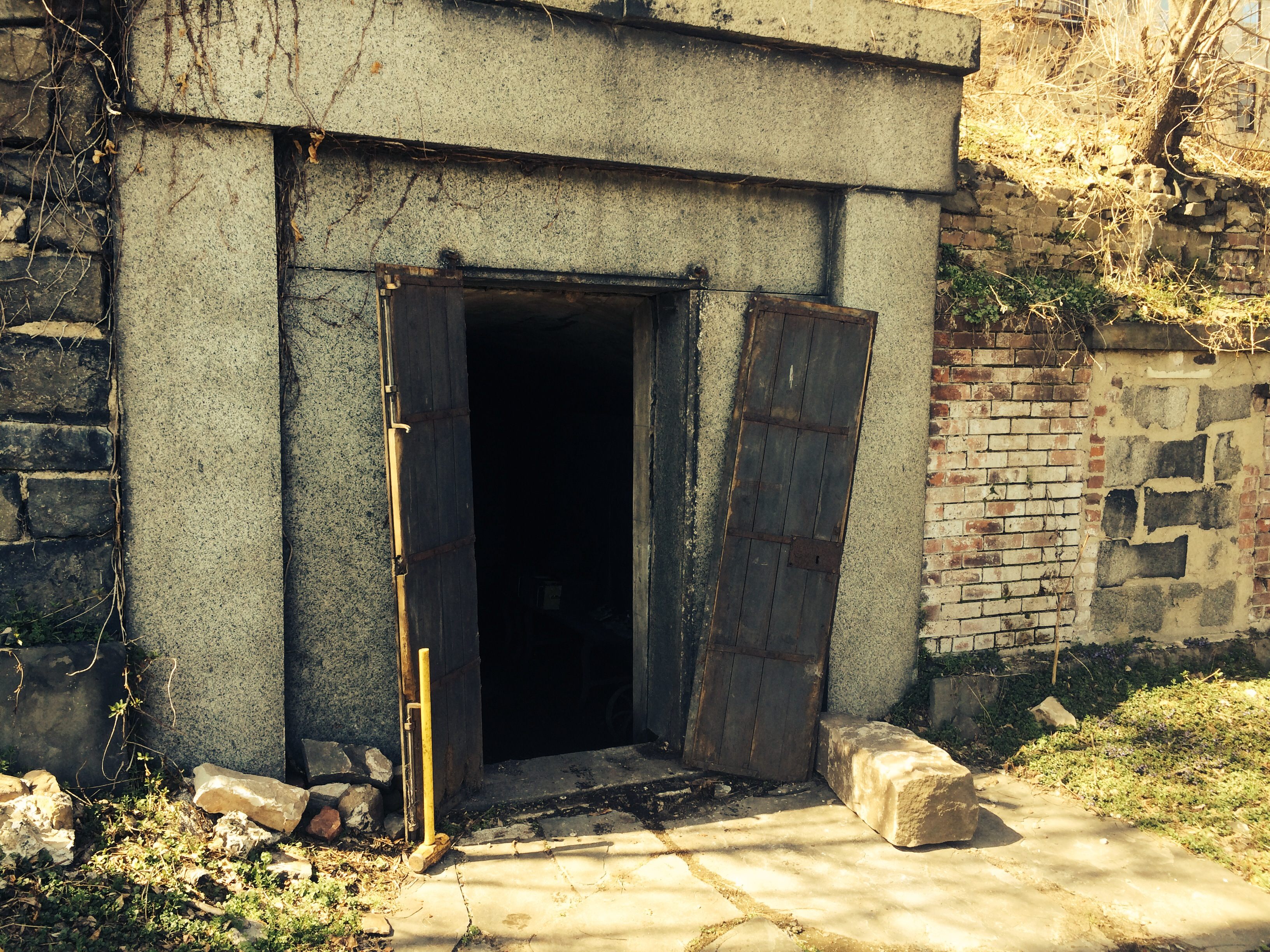
The now-uncovered stone staircase that leads up the western hill to the door is cracked and falling apart and the earth has sunk in many places, swallowing the Victorian tombstones into the ground. Unlocking the old rusted iron door, we stepped inside. The first antechamber was covered in marble walls. Markenstein explained that after the military vacated the property, the cemetery had planned to turn the bunker into luxury vaults. But with no takers, the marble walls remained intact. Stepping further into the pitch black, the light of the torch showed blackened brick tunnels heading in both directions.
Heading to the left and walking into another room Markenstein told me to “be careful in there.” Piled up against the wall were wooden boxes about 2 feet long, that Markenstein claimed contained live munitions left over from the War of 1812.
Beyond that were two slightly larger boxes, this time made of metal, that Markenstein explained were unburied child’s coffins.
“The Spoiler Hath Come With His Cold Withering Breath,
And the Loved and Cherished Lies Silent In Death.”
—Grave of Henry Drayton, died 1847
During the winter months of the late 19th century, with the ground too frosted over for the gravediggers, the old military bunkers were appropriated for cold storage for the dead. The neglect that would eventually close the cemetery was already well under way by the late Victorian period. The Urn, a monthly journal dedicated to the interests of cremation, ran a report in July 1894 under the heading “Cemetery Abuses” talked off the deplorable conditions at Jersey City; “rapid decomposition....coffin after coffin has been stacked one upon the other until half a dozen in a tier are jumbled together in such a manner as to be almost inseparable.” It proved too much for the Colgate family, who had their forebears re-interred at Green-Wood in Brooklyn.
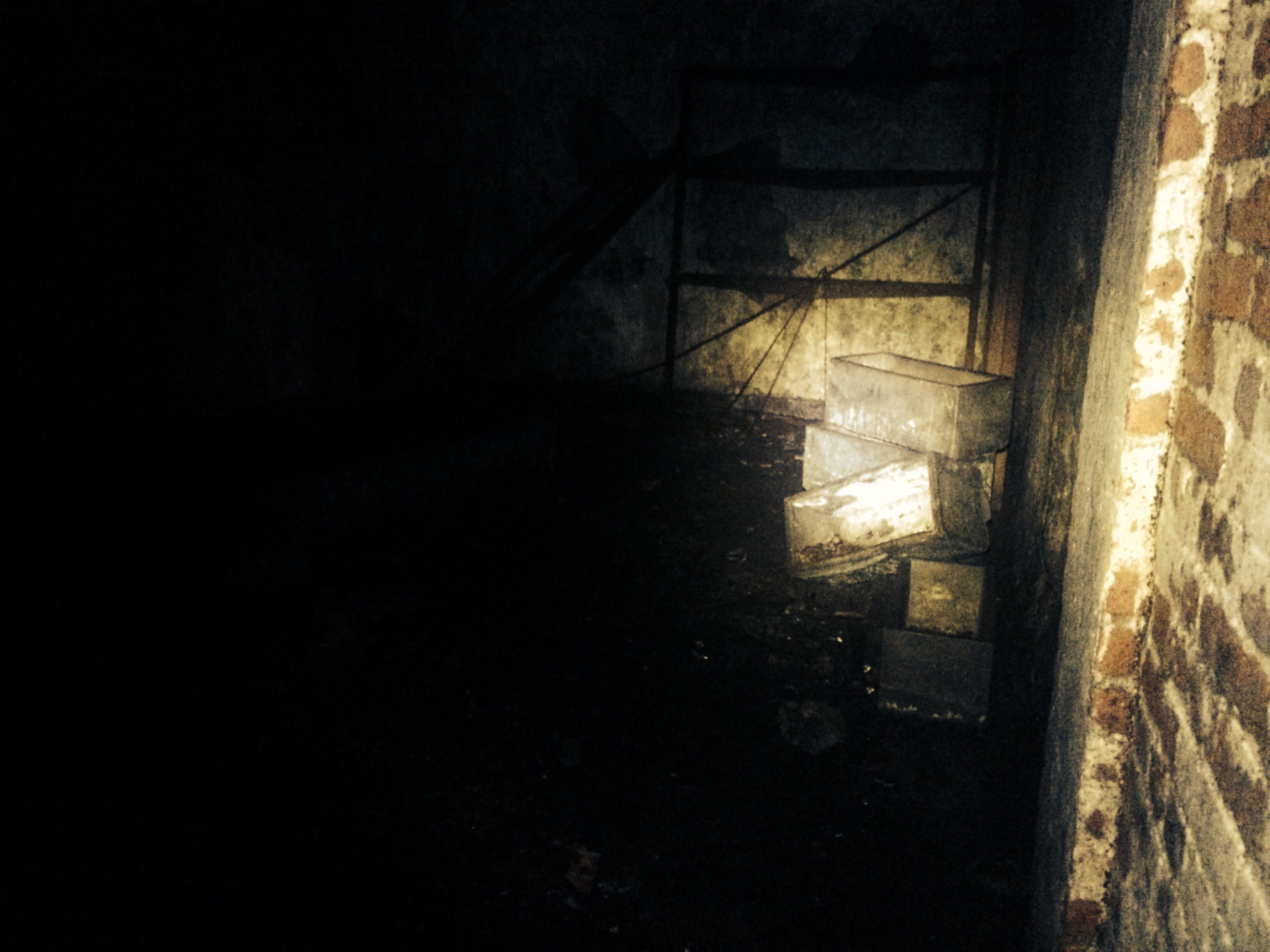

Top: Boxes of munitions. Above: When this antechamber was first opened a few years, no one had been inside since the 19th century.
Walking through the tunnels, into the old receiving vaults, human bones lined the floor. Markenstein explained how the tunnels were supposed to carry on through the hillside, and eventually ended up in what was now the basement swimming pool of neighboring Dickinson High School. Empty liquor bottles on the floor showed that the tunnels had received visitors over the years. Markenstein told me how an former student had come to the cemetery whilst they were restoring the graveyard and presented her sheepishly with a human skull he had once taken from the tunnels, saying he’d had nothing but bad luck in his life since then
Continuing on into the right-handed tunnel, my torch shone upon something glittering in the darkness. Another coffin, but this one adult- sized, highly ornamented with harps, flowers and decorative handles. It had clearly once been the height of luxury. Inside, Markenstein explained, was the skeleton of a 19th century Viennese Count. He’d been visiting New York and had passed away on his travels. Unclaimed and forgotten, he’s still in the Jersey hillside without a marker to remember him by
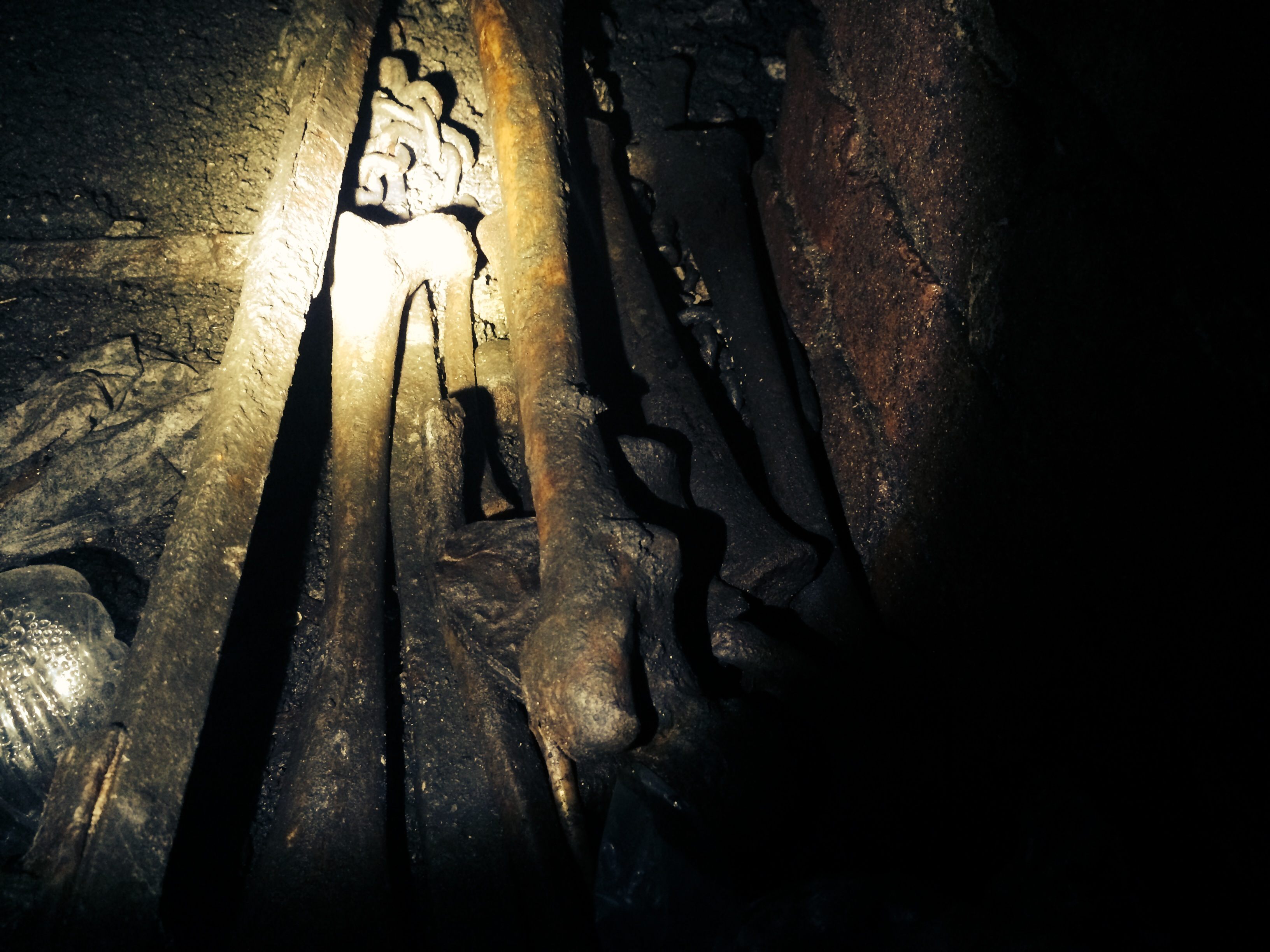
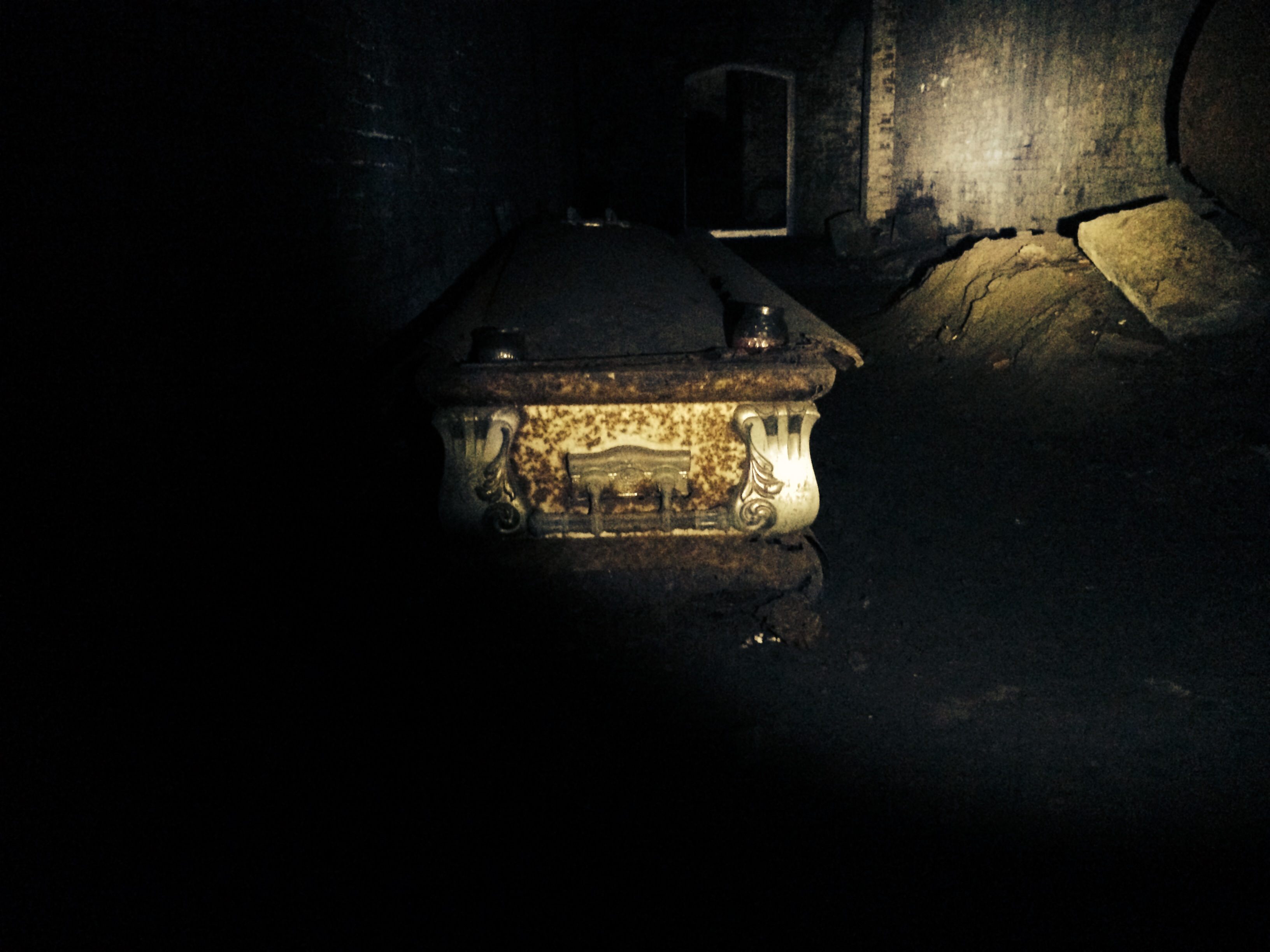
Beyond the Count’s coffin was another tomb, as plain as his was fancy. A simple metal box, it is the final resting place of Alice Holmes, also known as the Blind Poetess of Jersey City.
Holmes was nine when her family sailed for America from England. Contracting smallpox on the voyage she was left blind before reaching New York.
She went onto publish four volumes of poetry. She was also rumored to have been plagued by visions, and would offer psychic readings to the citizens of Jersey City. Lying forgotten in the mysterious tunnels of the cemetery, one of her poems makes somber reading:
To me the variegated earth,
Would seem one dark, unbroken plain,
If in my heart, I had not hid
Bright visions that oft come again.
For I through nine fair summers passed,
With scarce a cloud to shade my way,
And loved the face of nature more,
With each returning day.
But ere a tenth had fully come,
My gladsome heart was wrapt in gloom;
Lo! I was banished from the light,
Condemned to a living tomb.
Today, Jersey City cemetery is protected by its own unique private security force: two veterans of the Vietnam War, John “The Digger” Wilson and Tommy G. Forced out of their homes by the rising housing costs in Jersey City, and with nowhere else to go, the cemetery became their new home. They now live upstairs in the old caretaker’s cottage in return for working the grounds and protecting the tunnels from vandals. Tommy G. had been a POW in Vietnam, and Markenstein says that bringing the cemetery back to life had helped him deal with trauma from the war.
The recovery of Jersey City cemetery is similarly well underway. Running as non-profit, Markenstein and her volunteers have steadily rescued much of the cemetery. With no city or government funding, the major hurdle is raising money. Their goal is to get State and National Landmark Preservation status to ensure a stream of future funds, as well. It seems remarkable that such an historic site could be left forgotten. Sadly, the abandonment of this historic site isn’t uncommon. Just south of Philadelphia, where Mount Moriah, once every bit as grand as flourishing Green-Wood, now lies in neglect.
But to get placed on the National Historic Landmarks register takes money, and Markenstein struggles to raise money and awareness for this little forgotten cemetery. Regular fund raising events are now held on the grounds as are Shakespearian plays, film screenings, as well as tours and lectures. HBO used the graveyard as a location for several burial scenes in The Sopranos.
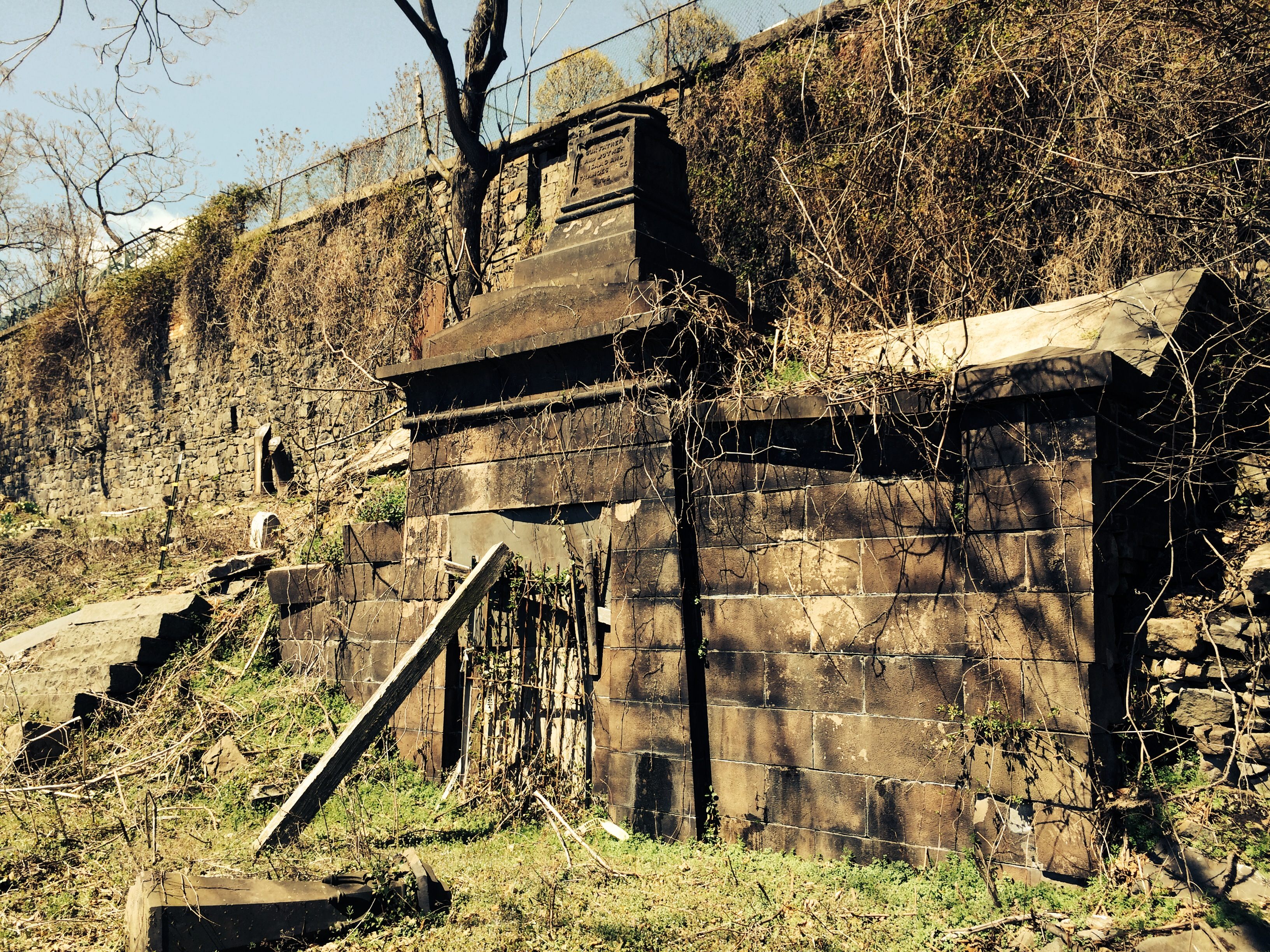
As more of the cemetery gets uncovered, there are more discoveries. “We’ve found incredible artifacts. Remnants of soldier’s boots, entrenching tools, shell casings, bowls,” Markenstein says. Next to the cottage, volunteers uncovered the ruins of a Victorian greenhouse and flower garden where visiting mourners would buy forget-me-nots, roses and peonies. The plan is to have a museum onsite. The cottage still holds the original undertakers’ ledgers, detailing who he buried, and more remarkably, the unusual ways people used to die in the 19th century, “killed by pile driver....cholera infantum, overdose of opium”. Markenstein also has the original minutes of the first meeting where the cemetery was incorporated, as well as their signed constitution.
Other finds are more gruesome; An entire section of a mass infant grave, from a cholera epidemic, completely unmarked and forgotten.
For Markenstein, it is all about fighting back the undergrowth little by little, clearing away the years of neglect that have covered over the final resting place of her ancestors. Soon she will have help in the form of a herd of goats. Rented from a farm upstate New York, the goats will spend the entire summer mowing down the weeds. They will be kept company by the snakes, wild turkeys and an eagle that have made this mysterious graveyard their home, or as Markenstein calls it, “my favorite garden.”



Follow us on Twitter to get the latest on the world's hidden wonders.
Like us on Facebook to get the latest on the world's hidden wonders.
Follow us on Twitter Like us on Facebook